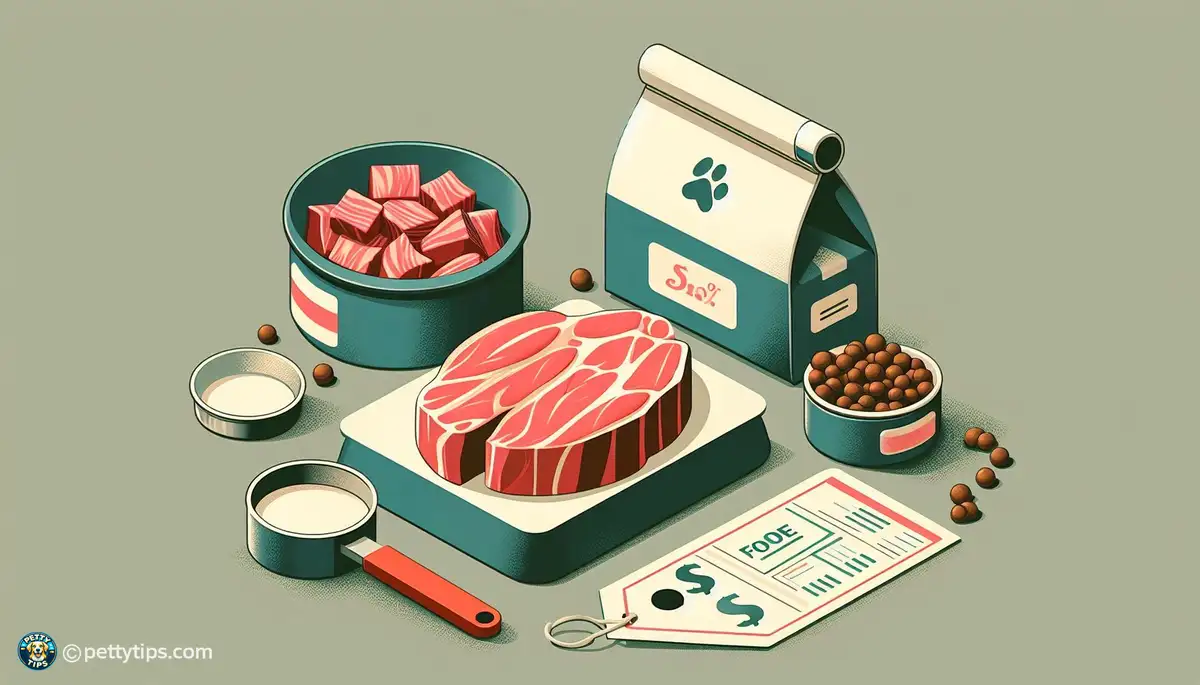
A Beginners Guide to Transitioning Your Pet to a Grain-Free Diet
Guay Matthew - Sep 10, 2024 - 5 min read


Raw feeding is a popular choice among pet owners who seek to provide their furry friends with a diet that closely resembles what they would eat in the wild. By feeding raw, you can offer your pet a diet rich in nutrients, enzymes, and natural flavors, which can contribute to their overall health and well-being. Many pet owners report benefits such as improved digestion, healthier coats, and increased energy levels in their pets after switching to a raw diet.
A raw diet typically consists of raw meat, bones, organs, and occasionally fruits and vegetables. It’s important to mimic the proportions of a natural diet as closely as possible, aiming for a balance of muscle meat, bone, and organ meat. While some pet owners prefer to purchase pre-made raw food products, others opt to prepare their own raw meals at home using fresh ingredients.
When it comes to raw feeding on a budget, sourcing affordable protein is key. Look for inexpensive options such as chicken, turkey, and pork, which are often more budget-friendly than exotic meats like lamb or venison. Buying in bulk from local farms or butcher shops can also help you save money in the long run. Additionally, consider incorporating less conventional protein sources such as fish or eggs, which can provide valuable nutrients at a lower cost.
To further stretch your budget, consider incorporating meat by-products into your pet’s diet. These include offal such as liver, heart, and kidneys, which are not only nutritious but also tend to be more affordable than prime cuts of meat. Many butcher shops sell these by-products at a fraction of the cost of muscle meat, making them a budget-friendly option for raw feeders.
While raw feeding offers numerous health benefits for pets, it’s essential to ensure that their meals are nutritionally balanced. Aim to include a variety of protein sources, such as poultry, red meat, and fish, to provide a diverse array of nutrients. Additionally, don’t forget to incorporate organ meats, which are rich in essential vitamins and minerals that may be lacking in muscle meat alone.
While not essential for a raw diet, fruits and vegetables can be a valuable addition to your pet’s meals, providing fiber, vitamins, and antioxidants. To keep costs down, focus on affordable options such as carrots, spinach, and apples, and consider buying in bulk or opting for frozen varieties when fresh produce is expensive or out of season.
For pet owners on a budget, making your own raw meals at home can be a cost-effective alternative to purchasing pre-made raw food products. Invest in a good quality meat grinder to process raw meat and bones, and consider batch cooking and freezing meals to save time and money in the long run. With a little planning and preparation, you can create nutritious homemade meals that are tailored to your pet’s specific dietary needs.
Don’t let leftovers and kitchen scraps go to waste—many can be repurposed into nutritious meals for your pet. For example, leftover meat trimmings, bones, and vegetable scraps can be used to make homemade bone broth, which is not only a budget-friendly source of nutrients but also highly palatable for pets. Get creative with your leftovers and experiment with different recipes to find what works best for your furry friend.
While a balanced raw diet should provide most of the nutrients your pet needs, supplements can be helpful for filling in any nutritional gaps. Look for cost-effective options such as fish oil for omega-3 fatty acids, which are essential for skin and coat health, and powdered eggshells for calcium, which is crucial for bone health. Additionally, consider incorporating natural additives such as turmeric or kelp for added health benefits without breaking the bank.
For the truly budget-conscious pet owner, making your own supplements at home can be a thrifty alternative to purchasing expensive commercial products. For example, you can easily make your own bone broth by simmering leftover bones and vegetable scraps in water for several hours, then straining the liquid to remove any solids. This homemade broth can be added to your pet’s meals to provide a boost of flavor and nutrients without the added cost.
When shopping for raw feeding supplies, it pays to shop around and compare prices from different sources. Look for sales, discounts, and bulk purchasing options to maximize your savings, and consider joining loyalty programs or mailing lists to receive exclusive offers and promotions from your favorite pet supply retailers. Additionally, don’t forget to factor in the cost of shipping when ordering online, as this can significantly impact the overall cost of your purchase.
Buying in bulk is one of the most effective ways to save money on raw feeding supplies. Consider purchasing larger quantities of meat, bones, and supplements from wholesalers or warehouse clubs to take advantage of lower unit prices. You can also save money by buying in-season fruits and vegetables in bulk and freezing them for later use. Just be sure to properly portion and store your bulk purchases to avoid waste and spoilage.
To avoid waste and ensure that your pet’s meals remain fresh and nutritious, practice portion control when feeding raw. Invest in a digital kitchen scale to accurately measure out appropriate serving sizes for your pet based on their size, age, and activity level. By feeding the right amount of food each day, you can prevent overfeeding and reduce the risk of food spoilage.
Proper storage is essential for maintaining the quality and safety of raw feeding ingredients. Store raw meat and bones in the refrigerator or freezer until ready to use, and be sure to thaw frozen items safely in the refrigerator rather than at room temperature to prevent bacterial growth. Invest in airtight containers or resealable bags to keep leftover portions fresh, and discard any food that shows signs of spoilage or contamination to ensure your pet’s health and safety.